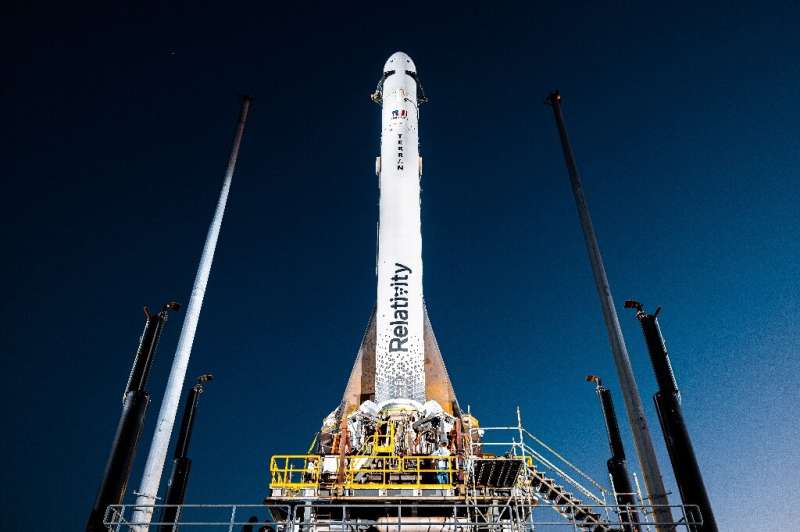If the rocket manages to attain low Earth orbit, it will be the first privately funded vehicle using methane fuel to do so on its first try, according to Relativity.
Terran 1 is not carrying a payload for its first flight, but the rocket will eventually be capable of putting up to 2,755 pounds (1,250 kilograms) into low Earth orbit.
The rocket is 110 feet (33.5 meters) tall with a diameter of 7.5 feet (2.2 meters).
Eighty-five percent of its mass is 3D printed with metal alloys, including the nine Aeon 1 engines on its first stage and the one Aeon Vacuum engine on its second stage.
It is the largest ever 3D printed object, according to the Long Beach-based company, and is made, it says, with the world's largest 3D metal printers.

Built in 60 days
Relativity's goal is to produce a rocket that is 95 percent 3D printed.
Terran 1 is powered by engines using liquid oxygen and liquid natural gas—the "propellants of the future," capable of eventually fueling a voyage to Mars, Relativity says.
SpaceX's Starship and Vulcan rockets being developed by United Launch Alliance use the same fuel.
Relativity is also building a larger rocket, Terran R, capable of putting a payload of 44,000 pounds (20,000 kg) into low Earth orbit.
The first launch of a Terran R, which is designed to be fully reusable, is scheduled for next year.
A satellite operator can wait for years for a spot on an Arianespace or SpaceX rocket, and Relativity Space hopes to accelerate the timeline with its 3D-printed rockets.
Relativity said its 3D-printed rockets use 100 times fewer parts than traditional rockets and can be built from raw materials in just 60 days.
Relativity has signed commercial launch contracts worth $1.65 billion, mostly for the Terran R, according to CEO Tim Ellis, who co-founded the company in 2015.
© 2023 AFP

